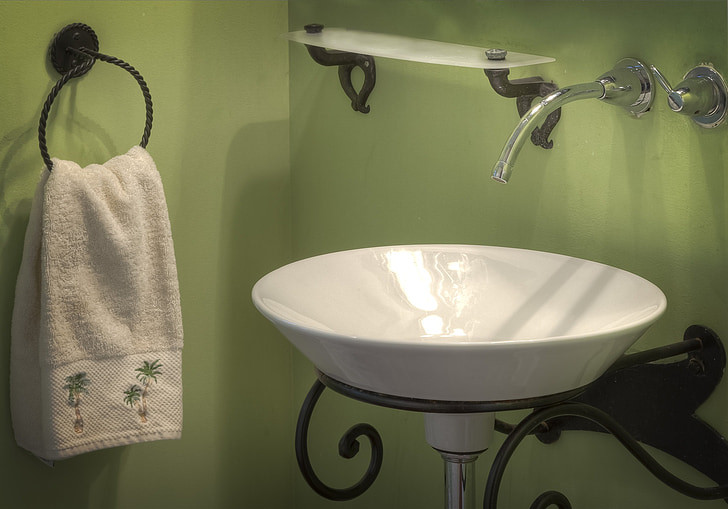Porcelain sinks: how to remove stains and some preventative advice

In bathrooms and kitchens, porcelain sinks add charm and elegance with their shiny appearance. That said, porcelain surfaces are prone to limescale formation, scratches and becoming dull-looking over time.
To prevent this, you need to take care of your sinks on a daily basis, promptly removing any dirt and grime residue which could compromise the condition of these fixtures.
Below, we suggest some useful tips for cleaning dirt and stains from your sinks, and also some preventative measures.
How to remove stains from porcelain sinks

When cleaning a porcelain sink, be careful not to scratch the surface by using excessively aggressive or abrasive detergents. Furthermore, if the porcelain of your sink is vintage or colored, you should avoid the use of chlorine-based bleaching detergents (which could discolor or damage the sink).
Begin by cleaning the sink using warm water and Marseille soap, gently wiping it down with a soft sponge. Carefully remove any soap, limescale, toothpaste or other dirt deposits. Now, you should be able to see any deeper, more subborn stains.
Once you have the stains located, use mild oxygen bleach or hydrogen peroxide on them, as follows: line the sink with paper towels and spray them with mild bleach or hydrogen peroxide until they are completely wet. Leave to act for 30-60 minutes before removing the paper towels and rinsing off with plenty of warm water. Dry the sink and if the stains are still visible, repeat this operation.
Preventing stains and dulling

Depending on whether your sink is in the bathroom or kitchen, there are different steps you can take to prevent stains and dulling:
- In the kitchen, be careful with metal cutlery and crockery to prevent these items from scratching the surface of the sink;
- Promptly remove any food residue, especially acidic substances such as tomatoes, tea bags, coffee grounds and staining foods such as beets;
- Protect the bottom of your sink with a mat. Use a dish drainer to prevent limescale build-up;
- In the bathroom, promptly remove any soap and water residue, rinsing and drying the sink carefully after each use;
- Pay particular attention to handling certain personal care products, such as cosmetics or hair dyes, which can permanently stain the sink.
By following these simple tips, your sink will always be in pristine condition.